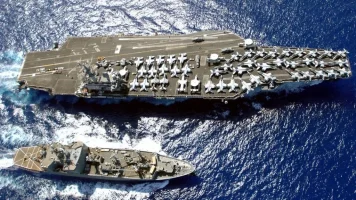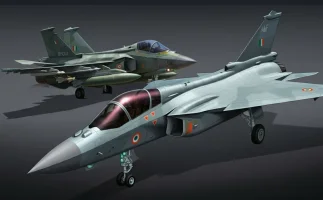- Views: 944
- Replies: 24

In a move signifying its aspirations for heightened naval power, Turkey has unveiled plans to construct its first domestically-built aircraft carrier. This ambitious program, announced by President Recep Tayyip Erdoğan in February 2024, aims to not only bolster Turkey's naval capabilities but also potentially surpass India's current carrier program in terms of size.
The new carrier, whose technical specifications were recently presented by the Istanbul Naval Shipyard, will boast an impressive length of 285 meters and a displacement of 60,000 tons. While details are still emerging, the project emphasizes self-reliance, with Turkey aiming to design and construct the carrier entirely in-house.
Focus on Size: This focus on size is significant, as India's sole operational carrier, INS Vikramaditya, has a displacement of around 45,000 tons. Should Turkey successfully execute its plans, the new carrier would be demonstrably larger than its Indian counterpart.
Beyond Size: The specifics unveiled also showcase Turkey's vision for the carrier's operational capabilities. A STOBAR (Short Take-Off But Arrested Recovery) system is planned, along with an eventual domestically developed catapult system. The initial airwing is expected to comprise 50 aircraft, including domestically produced Hurjet light attack aircraft and potentially navalized drones. Defensive systems will include a 32-cell vertical launch system and close-in weapon systems.
Challenges and Considerations: This ambitious project undoubtedly faces challenges. Building a functional aircraft carrier is a complex undertaking requiring significant technological expertise and resources. Additionally, integrating novel aircraft onboard will necessitate rigorous testing and training.
Expert Commentary: Analysts caution against solely focusing on size comparison. While surpassing India's carrier in physical dimensions is noteworthy, operational effectiveness will ultimately depend on factors like crew training, embarked airwing capabilities, and overall integration with the broader Turkish navy.
Turkey's aircraft carrier program represents a significant step forward in its quest for a more robust navy. The successful development and deployment of this vessel would undoubtedly solidify Turkey's position as a major regional naval power.
However, the international community will be keenly observing whether Turkey can navigate the technical hurdles and translate its ambitious plans into a truly operational and impactful carrier force.




